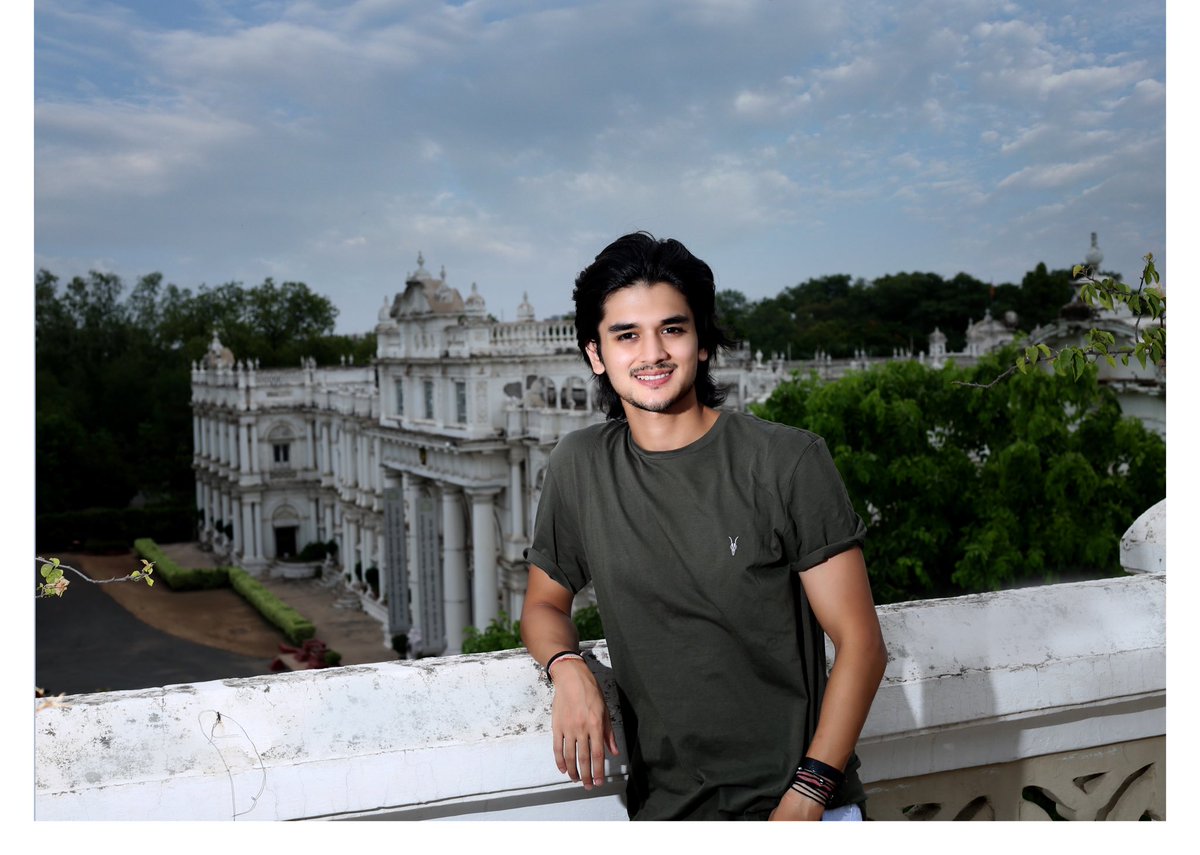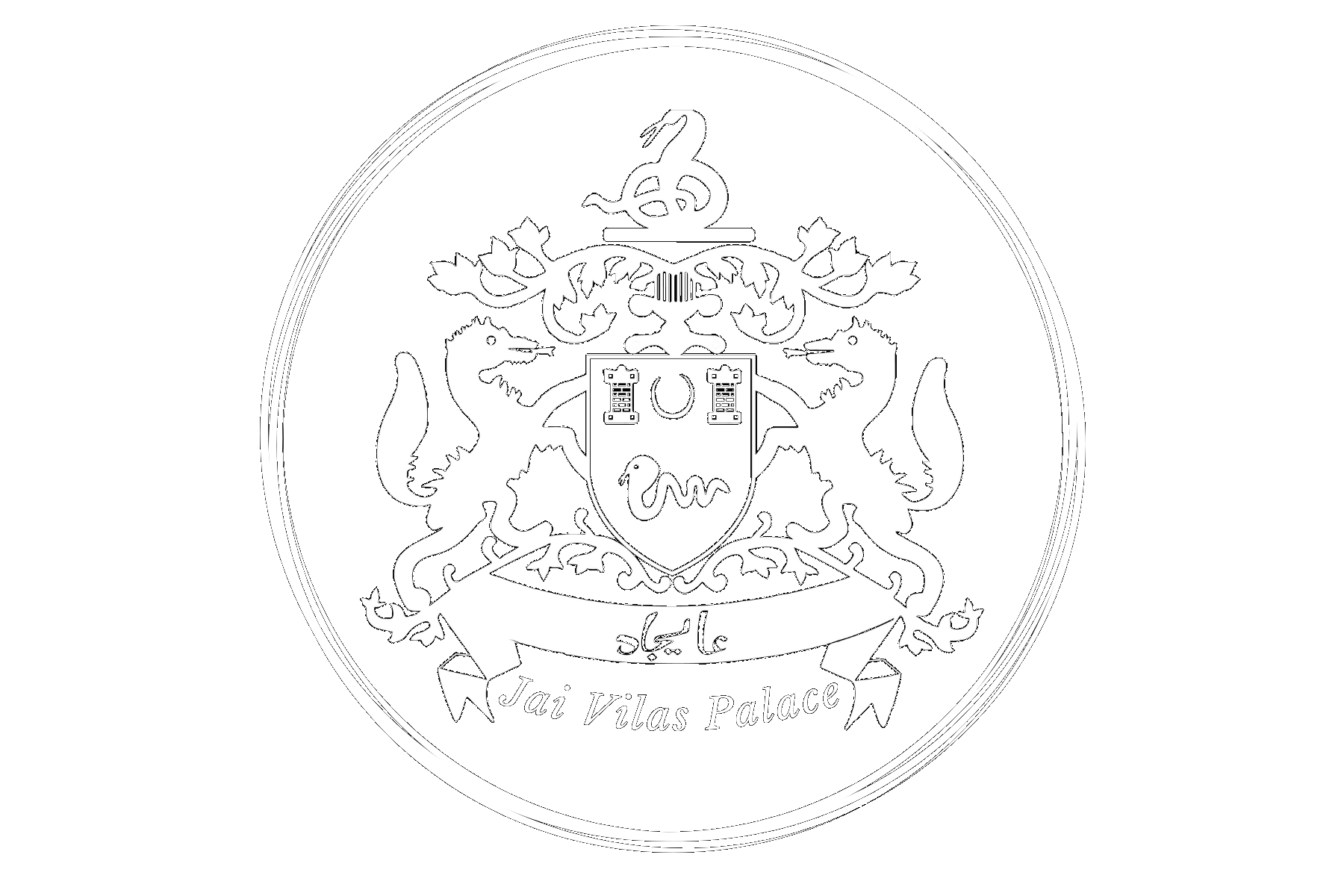From Sendrakas to Scindias
Scindias are flag bearers of the movement for Indian self rule, initiated by the mighty Maratha warrior king Chatrapati Shivaji Maharaj in Maratha Deccan. Initially known as Sendraks, they came to be called Shindes and then Scindias. They are from a small village Kanherkhed located in Satara region of Maratha Deccan. Basically Kunbi Maratha Kshatriyas, their ancestors were Patils of Kanherkhed. Members of the family joined the Maratha army under Chatrapati Shivaji and his sons Sambhaji and Rajaram, serving with bravery and dedication in several battles. Daughter of Shrimant Nemaji Scindia of Kanherkhed and his wife Shrimant Jivau Scindia, Savitribai was married to Chatrapati Shahuji Maharaja of Satara. The family reached the first ranks of the Maratha hierarchy under Shrimant Sardar Ranojirao Scindia, a gifted military commander under whose leadership Malwa was conquered. Scindia dynasty rose to prominence in the 18th century and went on to dominate India as one of the most prominent powers due to their influential presence in Delhi and their highly modernised army. The early Scindias were: (1.) Shrimant Mahadji Scindia Patil of Kanherkhed, (2.) Shrimant Pattu Scindia Patil of Kanherkhed, (3.) Shrimant Hangoji Scindia Patil of Kanherkhed, (4.) Shrimant Changoji Scindia Patil of Kanherkhed, (5.) Shrimant Dattaji Rao Scindia Patil of Kanherkhed, (6.) Shrimant Jankoji Rao Scindia Patil of Kanherkhed.
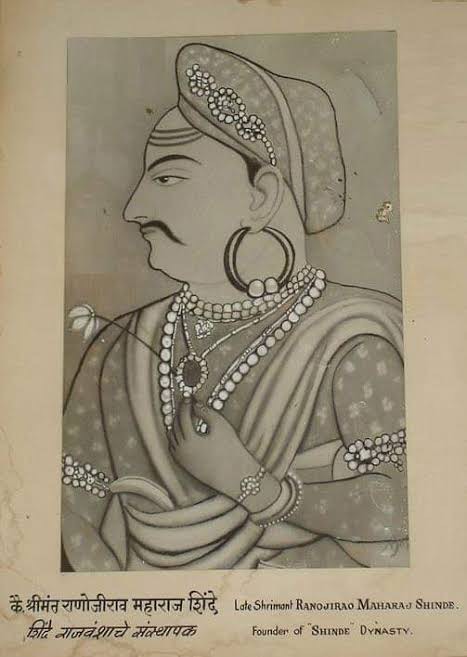
Shrimant Sardar Ranojirao Scindia
Succeeded on the death of his father Jankoji as Patil of Kanherkheda, he joined as an officer in the service of Balaji Vishvanath. He had a brother named Shambhuraje who had three sons Dharrao, Manaji(II) and Raghunathrao. Ranojirao was raised as a playmate of Peshwe Bajirao. Ranoji Rao Scindia was instrumental in defeating Portuguese colonisers on the Western Coast of India. He fought against the Nizam of Hyderabad, went on a Delhi campaign for the Marathas. It was during the tenure of Ranojirao Scindia as administrator of Ujjain that Mahakaleshwar temple in Ujjain that was destroyed by Sultan Iltutmish of Delhi in the past was reconstructed. Ranoji married in the Deccan, Nimbabai Sahib Scindia( Mainabai Sahib) and later married Chimabai Sahib Scindia, a Rajput lady from Datia. 1. Sons by Mainabai Sahib: Shrimant Jayyapaji Rao Scindia, Shrimant Dattaji Rao Scindia and Shrimant Jyotiba Rao Scindia. 2. Sons by Chimnabai Sahib: Shrimant Tukojirao Scindia and Shrimant Mahadji Scindia. 1. Daughters by Mainabai Sahib: Jankabai Raje, she was married in the Bhoite family of Tadawale Sammat Wagholi. Jogubai Raje, she was married in the Salunkhe family of Nerle, Patan, Satara. Yesubai Raje, she was married in the Shitole family of Patas, Daund, Poona. Mainabai Raje, she was married in Mane family of Rahimatpur, Koregaon, Satara. 2. Daughters by Chimabai Raje Scindia: Sagunabai Raje she was married in the Sardar Jadhav family of Goa. Kushabai Raje she was married in the Sardar Takpeer family of Chandwalli. Anandibai Raje, she was married in Sardar Nimbalkar family of Phaltan.
Shrimant Sardar Jayappaji Scindia
He was a powerful warrior who extended Scindia territory up to the Yamuna, he was appointed as the commander in chief of the Scindia’s Maratha forces, in February 1746. Appointed as C-in-C of the Maratha forces, February 1746. He received a grant for the parganas of Adilabad and Lohari in 1754. He was quite involved in extending Scindia power in Rajputana and was assassinated by two attendants of Maharaja Bijai Singh of Jodhpur, dying as a martyr for the cause of Hindavi Swarajya. By his wife Shrimant Sakhubai Scindia he had a son Jankoji who later attained martyrdom fighting the Afghans in the third battle of Panipat. Jayappaji also had two daughters by Sakhubai Raje, elder daughter Rajsabai who was married to the son of Sardar Piraji Naik and younger daughter Radhabai who was married in the Kapsikar Ghorpade family.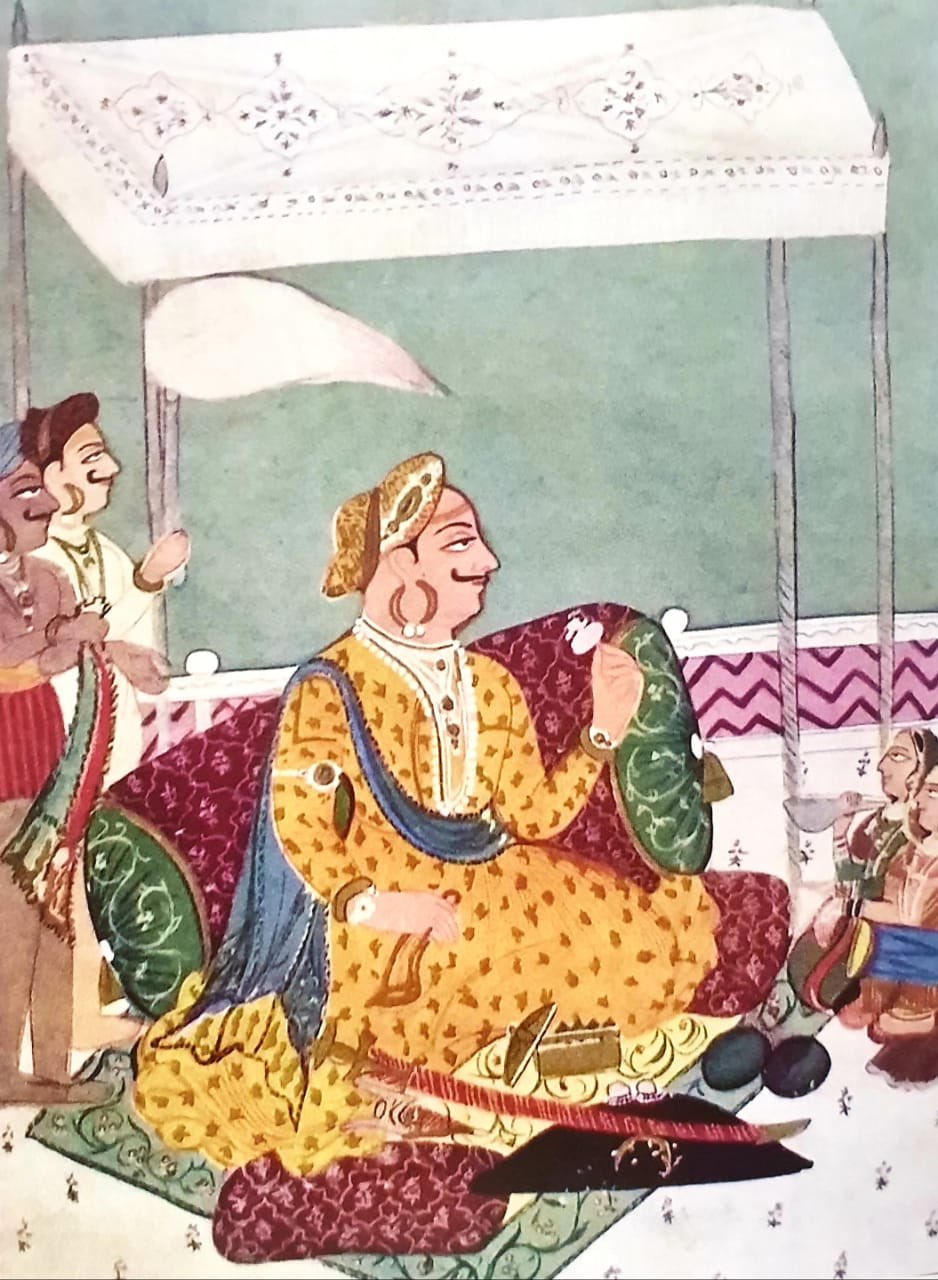
Shrimant Sardar Dattajirao Scindia( Regent )
Born in 1723, as the son of Shrimant Sardar Ranojirao Scindia and Mainabai Raje Scindia, Dattajirao was educated privately. He was considered to be an experienced and wise commander with the requisite capabilities to protect, Maratha acquisitions in North India in general and Punjab in particular. Dattajirao fulfilled his duties with utmost dedication and sincerity, but the Peshwa hadn’t provided him enough soldiers to protect India’s North-Western borders. Scindia still did not leave the theatre of action, and was ever ready to fight for Hindavi Swarajya. In 1758, Dattajirao married Bhagirathibai Raje Scindia Sahiba in Shrigonde, near Ahmadnagar in Maharashtra. Najib-ud-Daulah the Nawab of Rohilkhand was a staunch Abdali ally, and had dreams of becoming emperor of India by his support, but for this he had to kill the commander of Marathas in the North Dattajirao Scindia. Once in a surprise attack Najib found that opportunity, when Dattajirao was fighting using his sword sitting on his horse Lalmani, Najib shot him, Dattajirao was badly hurt and fell from the horse. Najib asked Dattajirao if he would fight more? Dattajirao said if he lives then definitely yes! Najib asked Qutub Khan to behead Dattajirao, at Buradi Ghat, at the plain of Rudhir on 10 January 1760. His head was sent to Abdali, also Jawahargaj the elephant of Scindia family. Later Mahadji Scindia slew Qutub Khan and took the Scindia family elephant, from Kunjpura in Haryana after he defeated the Afghan commander there and conquered it. Shrimant Dattajirao Scindia died as a martyr for the cause of Hindavi Swarajya.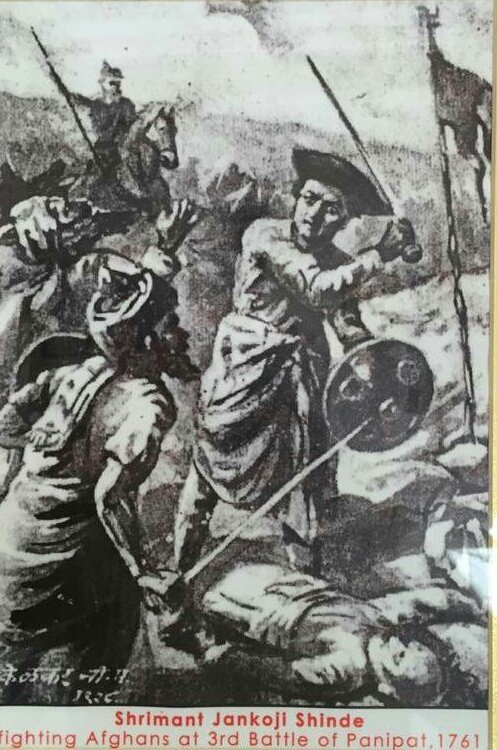
Shrimant Sardar Jankojirao Scindia
Son of Shrimant Jayyapaji Rao Scindia, he reigned under the regency of his uncle, Dattaji, until the latter’s martyrdom at Buradi Ghat on, 10th January 1760, Dattaji was killed in battlefield by Qutub Khan on the command of Najib-Ud-Daulah the chief of Rohilkhand and ally of Ahmad Shah Abdali. Jankojirao married daughter of Sultanji Khardekar Kashibai Raje after the death of his father, a brave warrior he fought valiantly in the third battle of Panipat and died as a martyr, fighting against Afghans, when he was just 16 years of age. Jankoji had no issues.
Shrimant Sardar Kedarji Rao Scindia
Son of Shrimant Sardar Tukoji Rao Scindia (Baba Sahib) who attained martyrdom fighting the Afghans in the third battle of Panipat, and grandson of Shrimant Sardar Ranoji Rao Scindia, by his wife, Shrimant Lakshmibai Sahib Scindia. He was recognised by the Peshwa as the Sardar of the Scindias, on 25th November 1763, but he refused to assume the position. Remained nominal Sardar until the appointment of Manaji, 10th July 1764. Subsequently served under his brother, Mahadji , as his first officer. As per the orders of Raghoba Peshwa Kedarji did many military campaigns against Parshuram Bhau Patwardhan of Miraj, Bhonsle of Nagpur and Nizam of Hyderabad. He married Shrimant Anandibai Sahib Scindia, daughter of Sabaji Supekar and later married Shrimant Sakubai Sahib Scindia. Kedarji Scindia passed away at a place called Aundh near Pune.
Shrimant Manaji Rao Scindia Bahadur (Manaji Phakde)
Son of Attock Veer Sabaji/Shambhuraje Scindia who was stationed as Maratha commander in Lahore and Peshawar. He was was ousted from Peshawar and Lahore by Ahmad Shah Abdali in August 1759. In the first Anglo-Maratha war Manaji fought for Raghunnathrao also known as Raghoba Peshwa. All through his life Manaji struggled against Peshwa Madhavrao, Peshwa Narayanrao, and Peshwa Sawai Madhavrao Narayan. In 1780 Manaji Scindia joined the Chatrapati of Kolhapur against the government of the Peshwa. Manaji had a son named Anand Rao Scindia.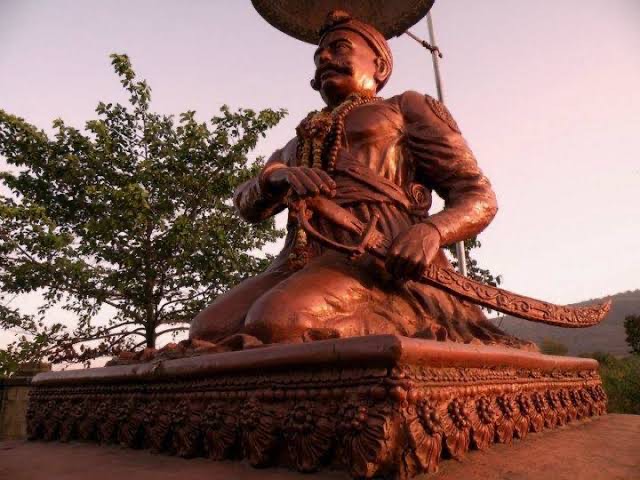
Shrimant Maharaja Mahadji Scindia
Born in 1729, fifth and youngest son of Shrimant Sardar Ranoji Rao Scindia, Patil of Kanherkheda, by his second wife, Shrimant Chimabai Sahib Scindia. Also known as the “ Great Maratha” he was able to establish Scindia supremacy in Hindustan and was the most prominent warrior and leader of his time. Mahadji defeated British many times such as in Wadgaon etc and till the time he was alive India was safe from aggression by any colonial powers.His wives:
(a) H.H. Shrimant Maharani Gangabai Raje Sahib Scindia from Palavekar family.
(b) H.H. Shrimant Maharani Lakshmibai Raje Sahib Scindia from Bhope-Kadam family of Tuljapur, Osmanabad.
(c) H.H. Shrimant Maharani Bhagirathibai Raje Sahib Scindia from Kardekar family.
(d) H.H. Shrimant Maharani Yamunabai Raje Sahib Scindia from Ramling Raul family.
(e) H.H. Shrimant Kesaribai Sahib.
(g) H.H. Ganna Begum Sahiba ( A Muslim lady of Persian descent who used to work as his secretary in male
disguise under the pseudonym of Ganna Singh.)
(h.) H.H. Shrimant Annapurnabai Raje Scindia from Nimbalkar family of Beed.
(I.) H.H. Shrimant Bhavanibai Raje Scindia from Ghatge family.
(j.) H.H Shrimant Radhabai Raje Scindia from Padamsinh Raul family.
(k.) H.H. Shrimant Parvatibai sister of Narsing Ghatge.
Daughters: Maharajkumari Shrimant Balabai Maharaje Sahib Scindia, Maharajkumari Shrimant Chimnabai
Maharaje Sahib Scindia, Maharajkumari Shrimant Bai Maharaje Sahib Scindia
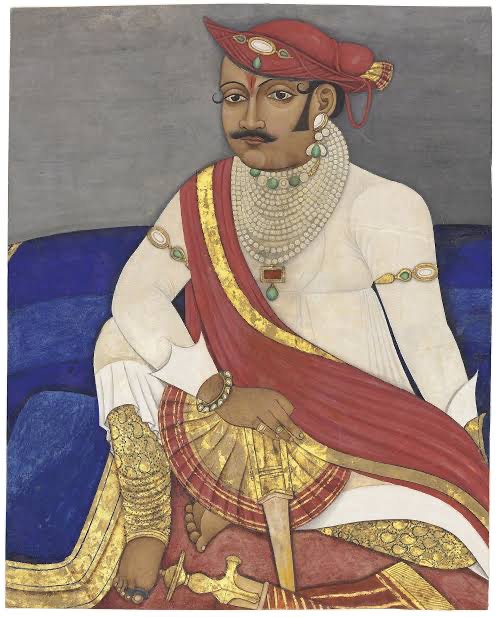
Maharaja Daulat Rao Scindia
Adopted by Shreenath Mahadji Scindia, he was the elder son of Shrimant Sardar Anand Rao Scindia, by his wife, Shrimant Mainabai Sahib. Daulat Rao Scindia had control over Delhi and fought against British in manny battles like, battle of Assaye and battle of Patparganj in 1803 where because of treachery of their French General they lost. Daulat Rao’s brother in law Hindu Rao established the locality Bada Hindu Rao in Delhi, his mansion there is now a hospital known as Hindu Rao Hospital.Wives:
(a.) H.H. Shrimant Maharani Durgabai Raje Sahib Scindia.
(b.) H.H. Shrimant Maharani Rukmabai Raje Sahib Scindia.
( c.)H.H. Shrimant Maharani Baizabai Raje Sahib Scindia .
(d.) H.H. Shrimant Maharani Balabai Raje Sahib Scindia.
Issues:
(a.) Yuvraj Maharaj Shrimant Madhorao Maharaje Sahib Scindia by Baizabai Raje Sahiba.
(b.) Maharajkumari Shrimant Chimnabai Maharaje Sahib Scindia by Baizabai Raje Sahiba. Chimnabai Raje Sahiba was married in the Dabhade family.
(c.) Shrimant Akhand Soubhagyavati …Bai Maharaje Sahib married later in the Patankar family had a daughter Gajabai Raje Sahiba who was married in the Khanvelkar family.
(d.) Maharaja Shrimant Jankoji Rao II Scindia adopted by Baizabai Raje Sahiba.
By his first wife Durgabai Raje, Daulatrao had a daughter named Bhawanibai Raje.
By his wife Rukmabai, Daulatrao had a daughter named Mainabai.
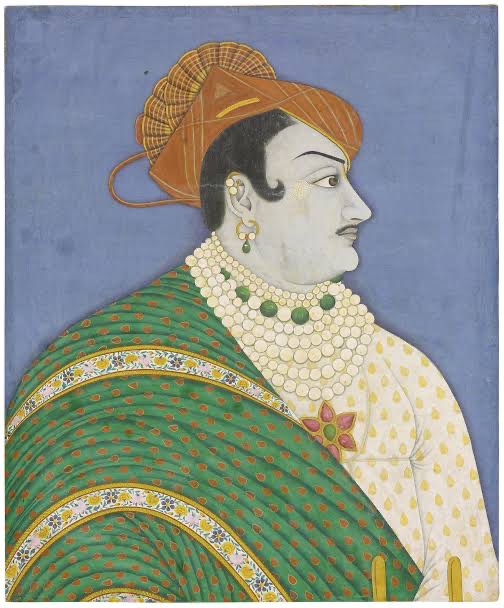
Shrimant Maharaja Jankojirao Scindia II
Born as Mugat Rao Scindia, son of Shrimant Sardar Patloji Rao Scindia, by his wife, the sister of Ihtiram-ud-Daula, Imarat Mahal, Sardar Krishnaji Rao Kadam ( Mama Sahib), Muzaffar Jang Bahadur.Wives:
(a.) H.H. Shrimant Maharani Bejabai Raje Sahib Scindia, youngest daughter of Sardar Manyabarrao Yeshwantrao Dabhade.
(b.) H.H. Shrimant Maharani Sarabai Raje Sahib Scindia, daughter of Sardar Yeshwantrao Ghorpade, Senapati.
(c.) H.H. Shrimant Maharani Tarabai Raje Sahib Scindia ( Regent for her adopted son).
Issues:
Bhagirathrao adopted and later known as Shrimant Jayaji Rao Scindia.
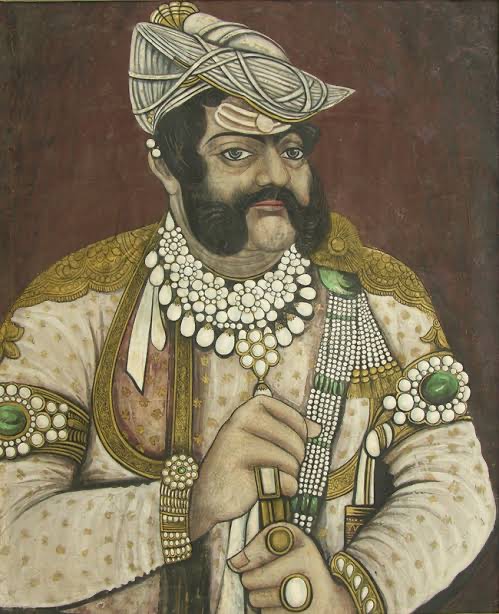
Shrimant Maharaja Jayajirao Scindia
Jayajirao Scindia was born to Bhagirath Shinde, son of Hanumantrao Shinde on 19 January 1835. After the death of His Highness Jankojirao Scindia II, in 1843, his widow Tara Bai adopted Bhagirath Rao, who became the ruler of Gwalior under the name of His Highness Maharaja Jayajirao Scindia on 22 February 1843. Jayajirao Scindia started modernizing the State of Gwalior. He established a new revenue collection system, and set up a judicial system with courts and judges. In 1872, Jayajirao Scindia loaned Rs 75 lakhs for the construction of the Agra-Gwalior portion of the Great Indian Peninsular Railway, and constructed many new buildings, reconstructed the Koteshwar Mandir, and donated Rs15 lakhs for the reconstruction of Gwalior Fort’s boundary wall and the broken parts of Man Mandir, Gujri Mahal and Johar Kund. He had four sons but only one survived. His fourth son named Madho Rao succeeded him as the ruler of Gwalior.Wives:
(a.) H.H. Shrimant Maharani Chimnabai Raje Sahib Scindia, daughter of Janrao Kadam.
(b.) H.H. Shrimant Maharani Lakshmibai Raje Sahib Scindia, daughter of Sardar Gurjar of Ratnagiri.
(c.) H.H. Shrimant Maharani Lakshmibai Raje Sahib Scindia daughter of Sawantwadi’s Sawant Ramchandra Bhonsle.
(d.) H.H. Shrimant Maharani Sakhyabai Raje Sahib Scindia daughter of Sardar Jadhav.
Issues:
(1.) Yuvraja Maharaj Shrimant Madho Rao Scindia Bahadur, who succeeded as H.H. Maharaja Shrimant Sir Madho Rao Scindia Bahadur, Maharaja of Gwalior by Gajra Raje Sahiba.
(2.) Maharajkumari Shrimant Tarabai Raje Maharaje Sahib Scindia by his first wife Chimnabai Raje.
(3.) Maharajkumari Shrimant Gunvantabai Maharaje Sahib Scindia by his third wife Lakshmibai Raje.
(4.) Maharajkumari Shrimant Manubai Maharaje Sahib Scindia by her second wife Lakshmibai Raje.
(5) Maharaja Kumar Shrimant Ganpat Rao Scindia (adopted).
(6.) Sardar Balwant Rao (Bhaiya Sahib) Scindia.
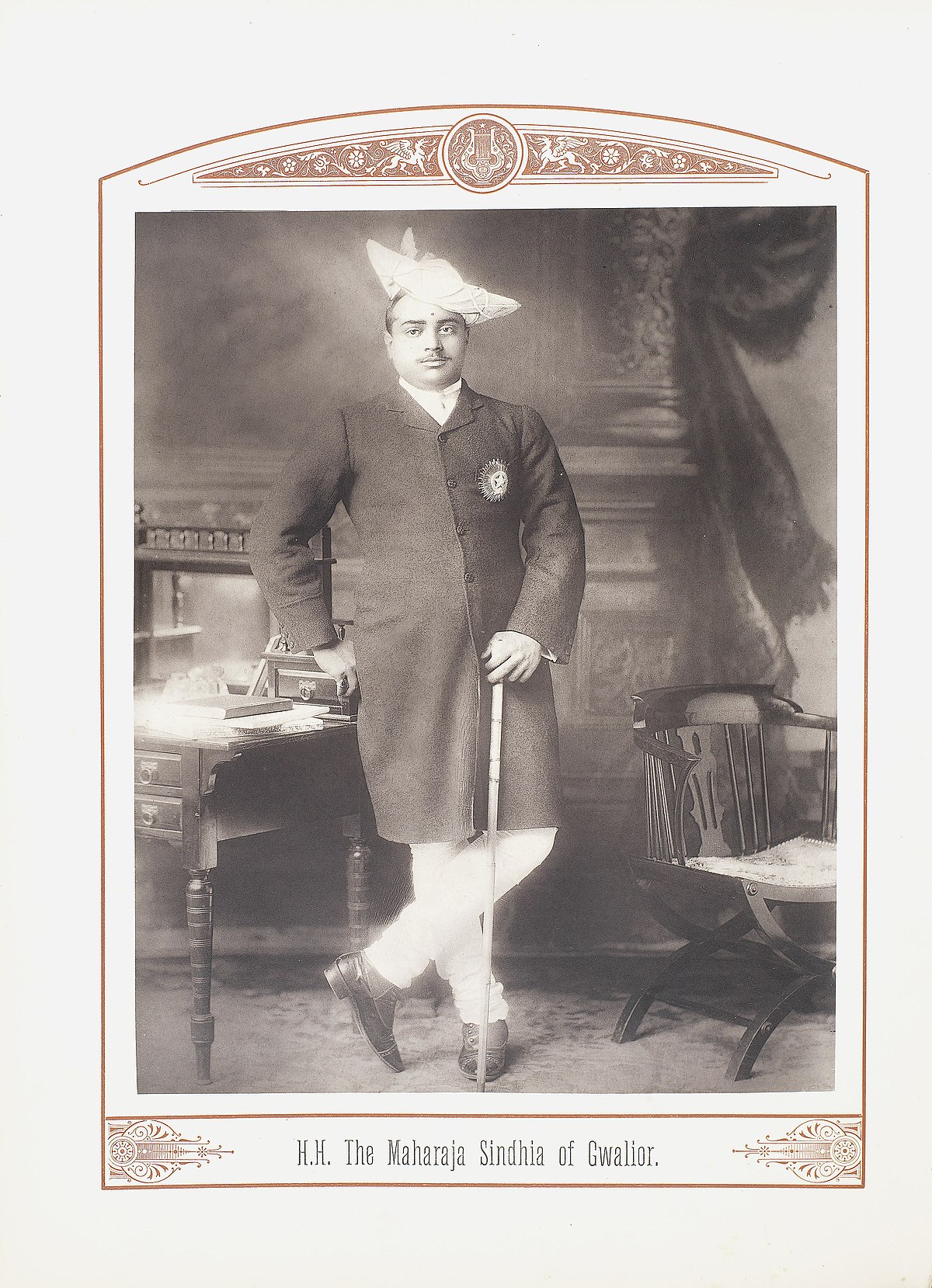
Shrimant Maharaja Madho Rao Scindia
Maker of modern Gwalior he insisted that surplus funds be invested to provide income for the progressive undertakings which he initiated. The compulsory 20—23 per cent, saving instituted by him has made possible the funds for irrigation, education and famine relief. This continual saving and setting aside of funds for nation-building activities was almost unheard of in the India of his day. Its results still persist. The many improvements introduced by Maharaja Madho Rao Scindia had been possible without also introducing increased taxation.Wives:
(a.) H.H. Shrimant Maharani Chinkubai Raje Sahib Scindia daughter of a Sardar from Satara Madhavrao Balwantrao Mohite.
(b.) H.H. Shrimant Maharani Gajrabai Raje Sahib Scindia daughter of Sardar of Sangli Shatrujit Vithalrao Rane.
Issues by Gajra Raje
(a.) Yuvaraja Maharaj Shrimant George Jivaji Rao Scindia Bahadur.
(b.) Maharajkumari Shrimant Mary Kambabai Raje Sahib.
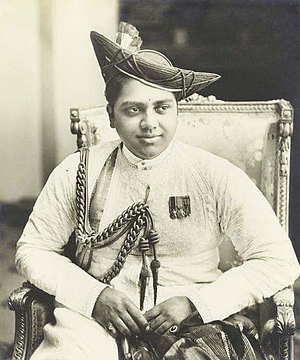
Shrimant Maharaja Jiwajirao Scindia
His Highness Jiwajirao Scindia lost his father when he was nine years old. He recognized the importance of representative institutions. He followed his father’s legacy and undertook a number of measures to relieve the financial burdens of the farmers, established educational institutions, libraries, and hospitals for women and children. Jeevajirao ruled Gwalior until India's independence in 1947 and was one of the first rulers to accede to the Indian Union and signed a covenant with other rulers by which Gwalior was merged with princely states to become the new Indian state of Madhya Bharat within the union of India. He contributed 50 crores to the Government of India exchequer. Maharaja Jiwajirai served as the State's Rajpramukh, or appointed Governor till 31 October 1956, when Madhya Bharat was merged into Madhya Pradesh. His wife was Rajmata Vijayaraje Scindia who bore him the heir to the throne Maharajkumar Madhavrao Scindia, and four daughters, HH Padmavati Raje, HH Usha Raje, HH Vasundhara Raje and HH Yashodhara Raje Scindia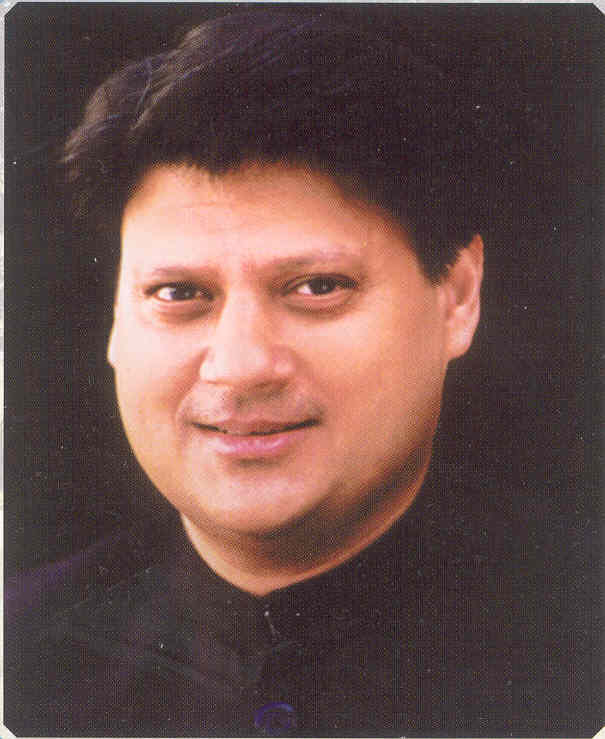
Shrimant Maharaja Madhavrao Scindia
Under the tenure of Shrimant Madhavrao Scindia as Minister of State with an independent charge, despite no increase in the number of train wagons, the Railways had managed to move 21.6 million tonnes more than the previous year, on a total of 106 billion net tonne kilometres, an all-time record for freight loading in the history of railways. In spite of subsidies to passenger traffic and the movement of essential commodities to the extent of over Rs 1100 crore, the railways had managed to earn a surplus of Rs 179 crore (in contrast to the deficit of about Rs 45 crore in 1983-84 and Rs 196 crore in 1984-1985). Shrimant Scindia’s experiences with domestic travel were also marked by his determination to break with the traditional mindset. The civil aviation ministry’s model for the aviation sector envisaged a dominant role for Indian Airlines with a small slot for air taxis that would fly on sectors that Indian Airlines did not want or could not handle. Shrimant’s vision was of a truly open skies. He was willing to encourage anybody with funds and expertise who seemed capable of launching a credible domestic airline. There would be no favouritism towards Indian Airlines, it would have to compete with the private carriers in the open market. Success of Jet Air and other Airlines and the resulting reduction in cost of air travel, vindicates the vision of Shrimant Scindia.Wife:
Shrimant Maharani Madhavi Raje Scindia
Issues:
(1.) Yuvaraja Maharaj Shrimant Jyotiraditya Rao Scindia.
(2.) Maharajkumari Shrimant Chitraganda Raje Scindia
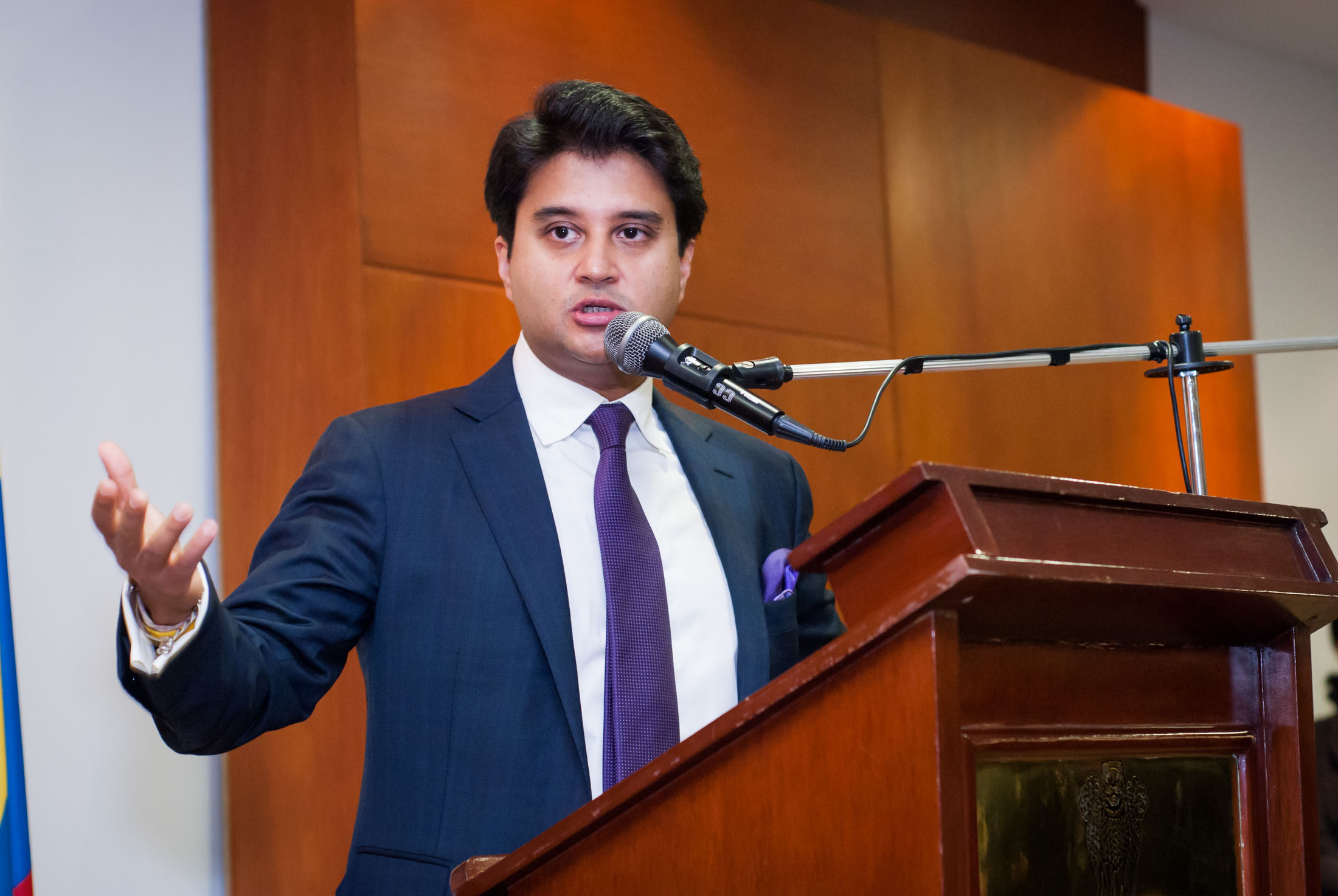
Maharaja Jyotiraditya M. Scindia
As Member of Parliament Lok Sabha Shrimant Jyotiraditya M. Scindia had initiated development works worth Rs 2,100 crore in his Lok Sabha constituency Guna and another Rs 1,300 crore in neighbouring Gwalior, Bhind and Morena regions. Shrimant had initiated various projects for his constituency worth several crores of Rupees in various sectors such as power projects: Rs 750 crore, roads: Rs 734 crore, telecom towers: Rs 100 crore water, sanitation and sewerage projects: Rs 100 crore, education: Rs 50 crore.Wife:
Shrimant Maharani Priyadarshini Raje Scindia
Issues:
(1.) Yuvaraja Maharaj Shrimant Mahanaaryaman Jyotiraditya Scindia Bahadur.
(2.) Maharajkumari Shrimant Ananya Raje Scindia
